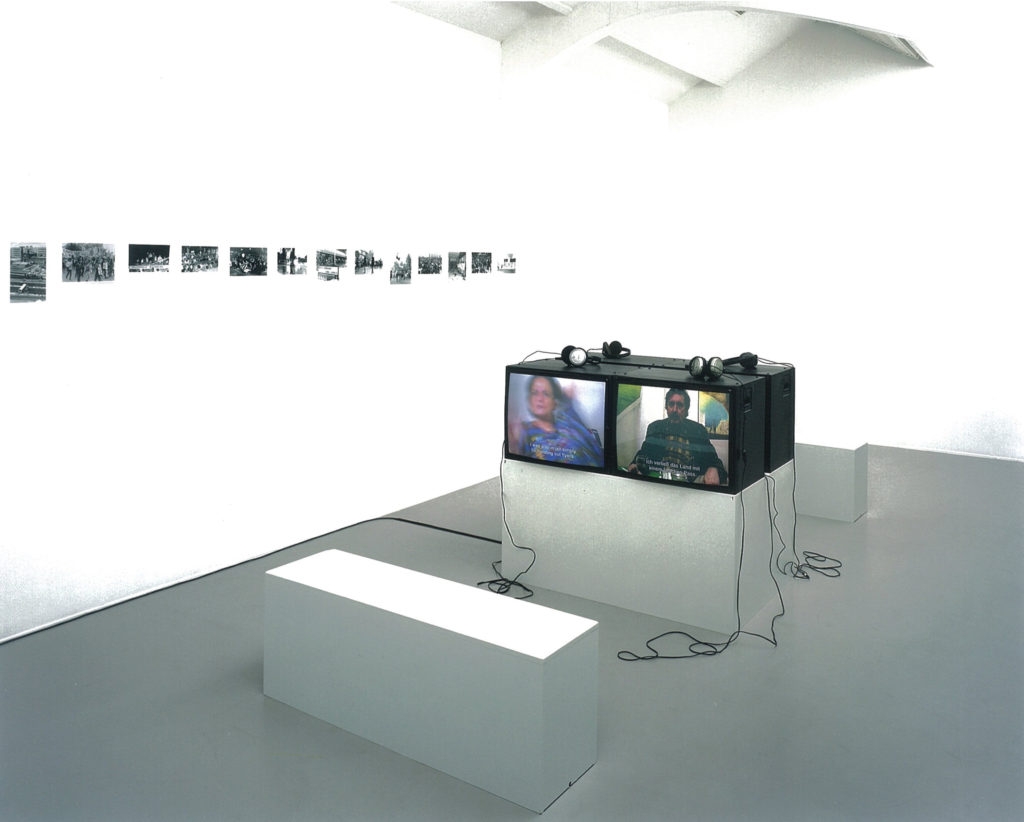Mexico 68
Heidrun Holzfeind
Solo exhibition
3 October – 13 December 2009
Vleeshal Zusterstraat (Map)
Curator: Lorenzo Benedetti

In Mexico 68 Heidrun Holzfeind combines her fascination for modernist architecture as a social space with her interest in the 1968 Mexican student movement to illuminate a turbulent chapter in Mexico’s history. This bipartite work, which Holzfeind completed in Mexico City in 2007, is currently on exhibit at De Kabinetten van De Vleeshal.
The first component, C.U., is a slide installation consisting of 120 photographs shown in double projection of the Ciudad Universitaria: the main campus of the National Autonomous University of (UNAM) and one of the largest academic environments in the world. This campus, built in the early 1950’s, was designed by Mexican architects Mario Pani, Enrique del Moral and Carlos Lazo. In designating it a world heritage site in 2007, UNESCO specified the Ciudad Universitaria as “one of the most important icons in architecture and urban development in Latin America”. Its design combines modernist principles and materials, for instance glass and steel, with references to traditional elements of Mexican architecture such as mosaics and murales (large frescos). Today, the campus features not only academic facilities, but also museums, theatres, metro stations and the 1968 Olympics stadium. Holzfeind’s photographs explore the Ciudad Universitaria, its concept and composition, as a modern city: its architecture a foundation for a social space.
For the second part of the exhibition, Mexico 68, Holzfeind interviewed 19 participants in the 1968 Mexican student movement, recording the discussions on videotape. On the eve of the 1968 Olympics, hosted by Mexico, students in Mexico City went on protest against the then government, occupying schools and universities and calling for workers to go on strike. The numbers of demonstrators soon grew, as did political unrest, bringing the protestors into conflict with the army. Tensions escalated in the Mexico City district of Tlatelolco, where soldiers and police officers opened fire on the crowds of demonstrators. Many protestors were killed in the Tlatelolco massacre; many others arrested.
Holzfeind’s interviewees stress the importance and impact of these events: on Mexican society, politics and culture in general; and on their own lives in particular. They reflect on the historical events of 1968, offer political and social analyses and share personal accounts and reminiscences. The interviews constitute a unique record of the dreams and ambitions of a generation that attempted to change late 1960’s Mexican society and overthrow the authoritarian regime of the day.
Some quotes from the interviews:
"My father’s arrest was the end of the movement for my family. He was in jail for two and a half years. It was a tragedy." (Hira de Gortari)
"I remember to march in through Reforma, the main avenue in the city in the head of the demonstration, crying: “For the people, against the government!” We were many marching, but there were many more in the sidewalks applauding and crying with us."(Marcelino Perelló Valls)
"We were in the top of the plaza. There were some ruins on the side so we jumped into the ruins. That’s were I spent most of the shooting. Because in the plaza you were uncovered. They were shooting from everywhere; they were even shooting at themselves because it was a circle." – Carmen Soler